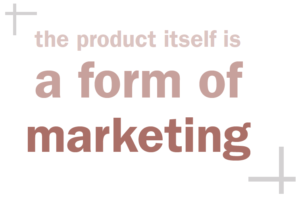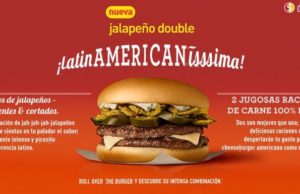Product: The 4 Ps of marketing — selling junk food to communities of color
Thursday, July 25, 2019What do Pepsi Limón, Doritos Salsa Verde, and Tapatío hot sauce-flavored Fritos all have in common? The food and beverage industry created these unhealthy products to attract Latinx consumers.1,2 Companies like PepsiCo develop products that are specifically designed to entice people of color — and this practice is nothing new. For example, in the 1990s, McDonald’s developed products aimed at Latinx communities called the “Fiesta Menu,” which included guacamole and beef tortas.3
 Many food and beverage products promoted and sold to communities of color, such as sodas, processed snacks, and fast-food meals, are low in nutrients and high in sugars, salt, and fats.4 These junk foods can increase disease risk or interfere with management of chronic conditions — especially in the absence of healthier food and beverage options. Meanwhile, communities of color have been the hardest hit by the current epidemic of diabetes and other nutrition-related diseases.5
Many food and beverage products promoted and sold to communities of color, such as sodas, processed snacks, and fast-food meals, are low in nutrients and high in sugars, salt, and fats.4 These junk foods can increase disease risk or interfere with management of chronic conditions — especially in the absence of healthier food and beverage options. Meanwhile, communities of color have been the hardest hit by the current epidemic of diabetes and other nutrition-related diseases.5
Although food and beverage companies market junk foods heavily through advertisements and social media promotions, the product being marketed is itself a form of marketing.6 Product development is just one of several ways that companies engage in target marketing,6 the practice of using tailored approaches to sell products to specific groups, such as communities of color. While there are benefits to food and beverage companies being inclusive with the products they offer and appealing to many cultures and ethnicities, doing so becomes a problem when such products are unhealthy.
What is target marketing?
Target marketing applies the “marketing mix” principles: product, price, place, and promotion. The “4 Ps” model is foundational to today’s digital marketplace and is widely adopted by both marketing practitioners and academics. Some business experts also add other Ps, such as “personalization,” to the mix.

The targeted marketing of unhealthy food and beverages to communities of color is common across all four marketing mix categories, as companies have designed:
- products especially for communities of color;
- prices designed to appeal to specific income groups, such as “value menus” targeting low-income neighborhoods, as communities of color are disproportionately represented within them;
- places that are saturated with unhealthy food products, due to zoning in certain communities that allows concentrations of fast-food restaurants or proliferation of outdoor advertising of unhealthy food and sugary beverages7; and
- promotions that exploit cultural images, symbolism, and language that are recognizable to communities of color to sell products or build brand loyalty.
In this brief, we explain how the marketing mix principle of “product” works and why targeting foods and drinks high in sugars, salt, and fats to communities of color contributes to health inequities.
Special flavors and designs
In a 2014 list compiled by business2community.com, of the top six brands that succeeded at understanding Hispanic marketing, McDonald’s ranked first. According to the business website, McDonald’s had recently been named Marketer of the Year by the Association of Hispanic Advertising Agencies, citing the fast-food chain’s “commitment to leading with ethnic insights, consistent focus on Latino research and business practices, and budgeting of multi-cultural business strategies.”8

A screenshot of McDonald’s jalapeño double burger advertisement.
The image used to promote the article featured an ad for the “Nueva Jalapeño Double Latin American-issima!,” a special jalapeño-loaded double cheeseburger. While the article highlighted the strategic use of the marketing mix to reach Latinx consumers and other communities of color, it was “product” that best illustrated how the 4 Ps work.
Junk food products that are specially designed for communities of color have been a long-standing target marketing practice, one that holds special appeal for youth and brand loyalists. For example, consider the iconic Oreo cookie. Over the course of its century-long history, variations have included the dulce de leche Oreo,9 watermelon Oreo,10 and even a rainbow Oreo, launched in support of gay pride.11
And while some junk food and beverage companies use special ingredients and flavor formulations to appeal to communities of color, others rely on packaging. In a separate brief, we discuss how Coca-Cola manufactured special Coke cans with Hispanic surnames on them and created temporary tattoos attached to those cans to target Latinx consumers. Sometimes, it’s simply a product’s name that’s directed at communities of color. In 2003, Hip Hop artist Nelly launched an energy drink named “Pimp Juice,” after one of his songs, stirring controversy among African Americans and nutrition advocates alike.12
Ethnic flavors with crossover appeal
Communities of color, particularly youth within these communities, are seen as trendsetters in entertainment, fashion, and even food.13 Therefore, when companies design products for communities of color, their wider crossover appeal makes them a win-win proposition.3
“Changing demographics are driving innovation, particularly as millennials’ purchasing power is starting to increase and as companies aim to target the large and growing Hispanic population,” notes a 2017 article titled “Snack Makers Look to Ethnic Cuisines for the Hottest New Flavors,” featured on the food industry website fooddive. com. “According to [market research company] Mintel, Hispanic foods and flavors are particularly popular among younger consumers and in households with children.”14
This may account for what seems like a recent explosion of potato chip brands and other savory snacks featuring spicy flavors ranging from Sriracha sauce to pico de gallo salsa. This flavor trend is an opportunity for food companies but has health implications for all children. A 2016 study published in the FASEB Journal (Federation of American Societies for Experimental Biology), titled “Children Are Eating Savory Snack Foods: What We Eat in America,” highlights the “widespread consumption of savory snack foods by children of all ages and race/ethnic backgrounds.”15
What can we do?
Food and beverage companies must stop aggressively marketing their least healthy products to communities of color. Products designed especially for communities of color should not primarily be junk food and sugary beverages. Acknowledging our shared responsibility to keep all communities safe and happy, we encourage continued direct dialogue among industry leaders, community residents, and health advocates to advance solutions that will help companies improve the nutritional quality of products being marketed and sold to communities of color and low-income communities.
One strategy advocates have had success with is urging companies to reformulate their products to improve their nutritional quality. For example, Kellogg’s reduced the sugar in its cereals16 after the Center for Science in the Public Interest implemented a campaign against the company for marketing junk food to young children.17
Additionally, public health and community groups should continue to educate journalists so they can document how food and beverage companies engage in state-of-the-art research — such as digital ad testing and measurement, mobile phone focus groups, and digital panels tied to multicultural audiences — to help them understand communities of color and create appealing, unhealthy products and brands.
To learn more about this issue and ways to combat it, read the rest of our target marketing series, join the target marketing subcommittee of the Food Marketing Workgroup, a coalition of organizations and individuals dedicated to eliminating unhealthy food marketing to young people, especially youth of color. Those interested in joining can email workgroup co-chair and subcommittee lead Berkeley Media Studies Group at info@bmsg.org.
References
1. News Desk. PepsiCo targets Hispanic market with launch of lime-flavoured Pepsi Limón. FoodBev Media. https://www.foodbev.com/news/pepsico-targets-hispanic-market-with-launch-of-lime-flavoured-pepsi-limon/. Published May 21, 2015. Accessed April 9, 2019.
2. Frito-Lay launches snack line aimed at Hispanics. Dallas Business Journal. https://www.bizjournals.com/dallas/stories/2002/05/20/daily34.html. Published May 22, 2002. Accessed April 9, 2019.
3. Helm B. Ethnic marketing: McDonald’s is lovin’ it. Bloomberg Businessweek. https://www.bloomberg.com/news/articles/2010-07-08/ethnic-marketing-mcdonalds-is-lovin-it. Published July 8, 2010. Accessed April 9, 2019.
4. Harris JL, Frazier III W, Kumanyika S, Ramirez A. Increasing disparities in unhealthy food advertising targeted to Hispanic and Black youth. UConn Rudd Center for Food Policy and Obesity. http://uconnruddcenter.org/files/Pdfs/TargetedMarketingReport2019.pdf. Published January 2019. Accessed April 11, 2019.
5. Committee on Accelerating Progress in Obesity Prevention; Food and Nutrition Board; Institute of Medicine. Accelerating progress in obesity prevention: Solving the weight of the nation; 2012. doi:10.17226/13275
6. Kotler, P, Armstrong, G. Principles of marketing. 14th ed. Toronto: Pearson Education Canada; 2012.
7. Ohri-Vachaspati P, Isgor Z, Rimkus L, Powell L, Barker D, Chaloupka F. Child-directed marketing inside and on the exterior of fast food restaurants. Am J Prev Med. 2014;48(1):22-30.
8. Bishop E. 6 brands that succeed at understanding Hispanic marketing. Business 2 Community. https://www.business2community.com/marketing/6-brands-succeed-understanding-hispanic-marketing-01030311. Published October 7, 2014. Accessed April 9, 2019.
9. Jones C. Dulce de Leche Oreos: What they are, what they should be. Serious Eats. https://www.seriouseats.com/2010/04/dulce-de-leche-oreos-what-they-are-what-they.html. Published April 20, 2010. Accessed May 17, 2019.
10. Tepper R. Watermelon Oreos are real and on sale at Target for a limited time. HuffPost Life. https://www.huffpost.com/entry/watermelon-oreo_n_3466729. Published December 7, 2017. Accessed May 17, 2019.
11. Hsu T. Gay Pride rainbow Oreo sparks 20,000 Facebook comments, debate. Los Angeles Times. https://www.latimes.com/business/la-fi-mo-gay-pride-oreo-20120626-story.html. Published June 26, 2012. Accessed May 17, 2019.
12. Hip Hop artist Nelly’s “Pimp Juice” raises controversy among African-Americans. VOA. https://www.voanews.com/a/a-13-a-2003-12-06-7-hip-66306962/542442.html. Published October 26, 2009. Accessed April 11, 2019.
13. Boschma J, National Journal. Black consumers have ‘unprecedented impact’ in 2015. The Atlantic. https://www.theatlantic.com/politics/archive/2016/02/black-consumers-have-unprecedented-impact-in-2015/433725/. Published February 2, 2016. Accessed April 11, 2019.
14. Macdonald C. Snack makers look to ethnic cuisines for the hottest new flavors. Food Dive. https://www.fooddive.com/news/snack-makers-look-to-ethnic-cuisines-for-the-hottest-new-flavors/447443/. Published July 20, 2017. Accessed April 11, 2019.
15. Rhodes DG, Clemens JC, Hymes MA, Moshfegh AJ. Children are eating savory snack foods: What we eat in America, NHANES 2011–2012. FASEB J. 2016;30(1_supplement):131.5-131.5.doi:10.1096/ fasebj.30.1_supplement.131.5
16. Vries L. Kellogg’s won’t market sugary cereal to kids. CBS News. https://www.cbsnews.com/news/kellogg-wont-market-sugary-cereal-to-kids/. Published June 14, 2007. Accessed June 4, 2019.
17. Center for Science in the Public Interest. Parents and advocates will sue Viacom and Kellogg. https://cspinet.org/news/parents-and-advocates-will-sue-viacom-kellogg-20060118. Published January 18, 2006. Accessed June 4, 2019.
Acknowledgments
This brief was written by Fernando Quintero, with editing support from Lori Dorfman, Heather Gehlert, and Daphne Marvel. Thanks to Sarah Han and Heather Gehlert for design contributions.
This brief was funded by a grant from the Robert Wood Johnson Foundation.
© 2019 Berkeley Media Studies Group, a program of the Public Health Institute




